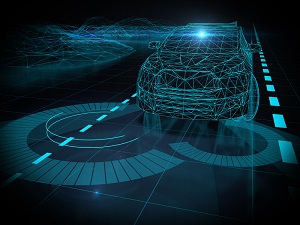In the past, the human mind has been singularly responsible for making decisions about automobile design, manufacturing and safety regulations. The influx of big data, however, coupled with the enhanced computing capabilities and constant connectivity of AI technologies, has changed the game. These technological developments have surpassed the capabilities of the human mind and revolutionized the world of driving. From city design to manufacturing, here, we will explore how big data is used to make important driving-related decisions:
Automobile Innovation and Advancement
Automobile design and manufacturing has always been a fast-moving business, with major manufacturers eagerly racing to raise the bar in efficiency, safety, and environmental-friendliness. The advancements in computing capabilities and big data availability, however, seem to have further quickened the rate at which this innovation is occurring, as well as broadening the horizons on the type of innovation. Today, big data is exceptionally useful in understanding what new technologies to invest in, like the development of hydrogen fuel cell vehicles — vehicles that have a smaller carbon footprint than gas vehicles and a larger range than electric vehicles.
Big data has also furthered existing research, elevating it to new heights. For instance, automobile manufacturers have been working on the development of self-driving cars for a while. Big data has allowed manufacturers to take much larger strides towards the reality of self-driving cars by providing them with the data needed for deep learning technology to do its work. BMW is already collecting data from cars in order to inform their self-driving cars of the future, including “machine data such as braking force, wiper, and headlight use, video data from on-board cameras, and GPS data”.
However, data does come with a downside. In a statement about self-driving cars, Bryant Walker Smith, a law professor at the University of South Carolina who studies the impact of autonomous technology on society, states that “these sensor-heavy systems will be enormous data harvesters” which will provide big carmakers with their consumers’ sensitive and personal data. If these major manufacturers do not proceed with integrity and respect, it could have devastating consequences for us all.
Establishing New Routes for Road Safety and Convenience
Good city planning that promotes road safety is essential to the quality of life available to the urban population. Things like access to public transport and/or traffic congestion affect the everyday life of city-dwellers and can play a part in determining the economic and emotional well-being of these individuals. Big data is able to help city planners improve public transportation and infrastructure through predictive data analytics, in a way that is beneficial to all citizens. Beyond predictive analytics, prescriptive analytics is also an option to help with infrastructure planning.
The input data needed to make these crucial decisions can be collected through municipal systems, such as traffic cameras. The explosive gig economy trend, however, is an even more major contributor to valuable data. With more and more apps that pay users to complete driver-related tasks being developed and used, valuable data regarding real-time traffic congestion and problematic routes are able to be collected on a large scale. City planners can use this data to determine the need for public transportation and improve problematic routes.
This information is not only able to assist city planners but is also able to help drivers stay safer on the roads. This is made possible through crash maps and predictive analysis. Through big data, the traffic department can identify problematic areas and put safety measures in place, like ensuring traffic police are always close-by. Finally, transportation businesses are also able to harness this data to monitor driver safety by collecting data on speeding, seat-belt usage, braking and acceleration habits.
Big data is directing the future of driving towards new levels of innovation and efficiency. With city planners and manufacturers alike harnessing the influx of data to improve life on the roads; there’s no doubt that big data will continue to play a role of increasing importance in driving-related decision making.
About the Author

Magnolia Potter is a muggle from the Pacific Northwest who writes from time to time. She covers a variety of topics and prefers not to settle on just one. When Magnolia’s not writing, you can find her in the outdoors or curled up with a good book and a mug of butterbeer. She is still waiting for her Hogwarts acceptance letter. You can chat with her on Twitter @MuggleMagnolia.
Sign up for the free insideBIGDATA newsletter.





Speak Your Mind